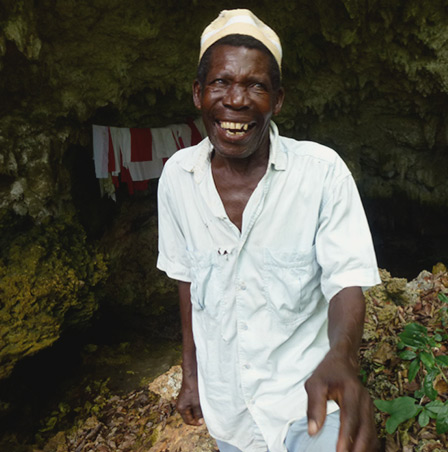లక్ష్యాలు మరియు లక్ష్యాలు
SNSI యొక్క లక్ష్యాలు మరియు లక్ష్యాలు SNSI సంస్థాగత మిషన్ మరియు పవిత్రమైన సహజ ప్రదేశాల భవిష్యత్తు కోసం దాని దృష్టిపై ఆధారపడి ఉంటాయి (క్రింద చూడండి). అన్నీ ప్రస్తుతం శుద్ధీకరణలో ఉన్నాయి.
పవిత్ర సహజ సైట్ల చొరవ యొక్క మొత్తం లక్ష్యం:
“రక్షణకు సహాయపడటానికి, వారి సంరక్షకులు మరియు సమాజాలకు మద్దతు ద్వారా పవిత్ర సహజ ప్రదేశాల పరిరక్షణ మరియు పునరుజ్జీవనం. ”
ఈ మొత్తం లక్ష్యంలో చొరవ అభివృద్ధి చెందింది 5 లక్ష్యాలు:
1. దీర్ఘకాలిక రక్షణకు మద్దతు ఇవ్వడానికి, పవిత్ర పరిరక్షణ మరియు పునరుజ్జీవనం
సహజ ప్రదేశాలు మరియు వాటి జీవ సాంస్కృతిక ప్రాముఖ్యత.
2. గార్డియన్ గైడెడ్ చొరవగా ఉండటానికి మరియు వారి గొంతులను విస్తృతంగా తీసుకురావడానికి సహాయపడటానికి
ప్రేక్షకులు, సంభాషణను ప్రోత్సహించండి మరియు కీలక నిర్ణయంతో వంతెన పాత్ర పోషించడం
తయారీదారులు.
3. ప్రకృతి పరిరక్షణ సమాజంలో భాగస్వాములతో సహకరించడానికి మరియు మరిన్ని
అవగాహనను ప్రోత్సహించడానికి విస్తృతంగా, ఫీల్డ్ ఆధారిత చర్య, విధాన అభివృద్ధి మరియు పవిత్ర సహజ ప్రదేశాల పరిరక్షణ వైపు మెరుగైన వనరులు;
4. వాటాదారులతో నిమగ్నమవ్వడానికి, రంగాల ఆసక్తులు (వాడతారు.ఉదా. అటవీ, గనుల తవ్వకం, పర్యాటకం,
etc.లు) మరియు అవగాహనను ప్రోత్సహించడానికి విస్తృత ప్రజలు, మరియు గౌరవప్రదమైన సంబంధాలు
పవిత్ర సహజ ప్రదేశాల సంరక్షకులతో.
5. వైపు పనిచేయడానికి మరియు ఎక్కడ ఉన్నాయో తగిన సహాయక నెట్వర్క్లు
పవిత్ర సహజ ప్రదేశాలలో చురుకుగా ఉన్న సంస్థలు మరియు సంరక్షకులు పరిరక్షణ.
వర్కింగ్ మిషన్ మరియు దృష్టి
భవిష్యత్తులో పవిత్రమైన సహజ ప్రదేశాల కోసం SNSI దృష్టి SNSI మిషన్ ద్వారా పనిచేస్తుంది, దీనిపై పై లక్ష్యాలు మరియు లక్ష్యాలు ఆధారపడి ఉన్నాయి.
ఒక సంస్థగా SNSI కోసం ఈ మిషన్ పవిత్ర సహజ ప్రదేశాల దృష్టిని ప్రారంభించడానికి ఉపయోగపడుతుంది.
1.
కస్టోడియన్-గైడెడ్: సలహా ఇచ్చిన పవిత్ర సహజ ప్రదేశాలపై ఒక చొరవను గ్రహించడం
సంరక్షకులు.
2.
మద్దతు: సంరక్షించడానికి సంరక్షకులు మరియు సమాజాలకు మద్దతు ఇవ్వండి, రక్షించండి, పరిరక్షించండి
మరియు పవిత్రమైన సహజ ప్రదేశాలను పునరుద్ధరించండి,
3. భాగస్వామ్యాలు, నెట్వర్కింగ్ మరియు సాంస్కృతిక మార్పిడి: దగ్గరగా పని చేయండి
భాగస్వాములు మరియు వ్యూహాత్మక నెట్వర్కింగ్ మద్దతులో పాల్గొనండి మరియు సాంస్కృతిక సాంస్కృతికతను సులభతరం చేయండి
SNS సంరక్షకులకు మద్దతు ఇచ్చే మరియు బలపరిచే మార్పిడి.
4. పరిరక్షణ: గుర్తింపుగా పరిరక్షణ సంఘాన్ని నిమగ్నం చేయండి, రక్షణ,
పవిత్రమైన సహజ ప్రదేశాల పరిరక్షణ మరియు పునరుజ్జీవనం మరియు వాటిని వాటికి సున్నితం చేయండి
సాంస్కృతిక, ఆధ్యాత్మిక మరియు జీవ ప్రాముఖ్యత
5. ఓపెనింగ్స్ అందించండి: అంతర్జాతీయ మరియు జాతీయ స్థాయిలో ప్రారంభ స్థలాలు
సంరక్షకులు మరియు వారి ప్రతినిధులు వాటిని వ్యక్తీకరించడానికి మరియు కమ్యూనికేట్ చేయడానికి
బెదిరింపులను అరికట్టడంలో వారి పవిత్రమైన సహజ ప్రదేశాలకు సంబంధించిన ఆకాంక్షలు, ఒత్తిళ్లు
మరియు వారు గ్రహించిన ప్రభావాలు,
6. ప్రభావ విధానం: జాతీయ మరియు అంతర్జాతీయ విధానాలను ప్రభావితం చేయండి
సంరక్షకుల గుర్తింపు మరియు పవిత్ర సహజ సైట్ల పరిరక్షణ,
7.
సంభాషణను సులభతరం చేయండి: సంభాషణ మరియు సాంస్కృతికాన్ని ప్రారంభించండి మరియు సులభతరం చేయండి
సంరక్షకుల మధ్య మార్పిడి, నిర్ణయాధికారులు మరియు ఇతర
వాటాదారులు (గనుల తవ్వకం, అటవీ, పర్యాటకం),
8. వనరులను రూపొందించండి: వనరులు మరియు మార్గదర్శకత్వాన్ని రూపొందించండి (పద్ధతులు మరియు
విధానాలు) ఇది సంరక్షకులకు మరియు సమాజాలకు సహాయం చేస్తుంది
వారి పవిత్రమైన సహజ ప్రదేశాలు.
దృష్టి భవిష్యత్తు, ఇది SNSI వైపు పని చేస్తుంది.
1. SNS రక్షించబడింది మరియు గౌరవించబడింది: పవిత్రమైన సహజ ప్రదేశాలు బాగా గౌరవించబడ్డాయి మరియు
లోకల్ వద్ద రక్షించబడింది, ఆమోదంతో జాతీయ మరియు అంతర్జాతీయ స్థాయి మరియు
చట్టాలు మరియు విధానాలను ప్రారంభించడం;
పరస్పర గౌరవం: విభిన్న ఆధ్యాత్మిక మరియు విశ్వాసం, మత సంప్రదాయాలు పవిత్రమైన సహజ ప్రదేశాలలో ఒకరినొకరు గౌరవిస్తాయి.
ii. పరిరక్షణ: పరిరక్షణ సంఘం నిశ్చితార్థం మరియు సహాయక;
iii. అభివృద్ధి: అభివృద్ధి ప్రక్రియలలో ప్రధాన స్రవంతి మరియు గౌరవనీయమైన.
2. SNS నెట్వర్క్లను ఏర్పరుస్తుంది: పవిత్రమైన సహజ ప్రదేశాలు సామాజికంగా నోడ్లు లేదా పాయింట్లను ఏర్పరుస్తాయి-స్థితిస్థాపకంగా ఉండే పర్యావరణ నెట్వర్క్లు, అనుకూల మరియు బాగా కనెక్ట్.
3. ఆరోగ్యకరమైన స్వభావం: జీవవైవిధ్యం సంరక్షించబడుతుంది, సంరక్షించబడింది, లేదా అవసరమైనప్పుడు, ఉంది
వారి సమగ్రతను భద్రపరచడానికి పునరుద్ధరణ మరియు నివారణ చర్యల ద్వారా కోలుకున్నారు.
ఈ విషయంలో పరిరక్షణ సంఘం చాలా సహాయకారి.
4. సంరక్షకుడు స్వీయ-నిర్ణయం: సంరక్షకులు తమ సొంత నిర్ణయాలు తీసుకుంటారు, కలిగి
సామర్థ్యం మరియు బలం మరియు ఇతర వాటాదారులచే వింటారు మరియు మద్దతు ఇస్తారు.
5. కమ్యూనిటీ శ్రేయస్సు: కమ్యూనిటీ శ్రేయస్సు పవిత్రతకు సంబంధించినది
సహజ సైట్లు.
6. సాంస్కృతిక మరియు ఆధ్యాత్మిక కొనసాగింపు: సజీవ మత మరియు సాంస్కృతిక వారసత్వం
సంరక్షించబడింది, సంరక్షించబడింది, లేదా సంరక్షకుల ఆకాంక్షలకు అనుగుణంగా పునరుద్ధరించబడింది
మరియు వారి సంఘాలు.




